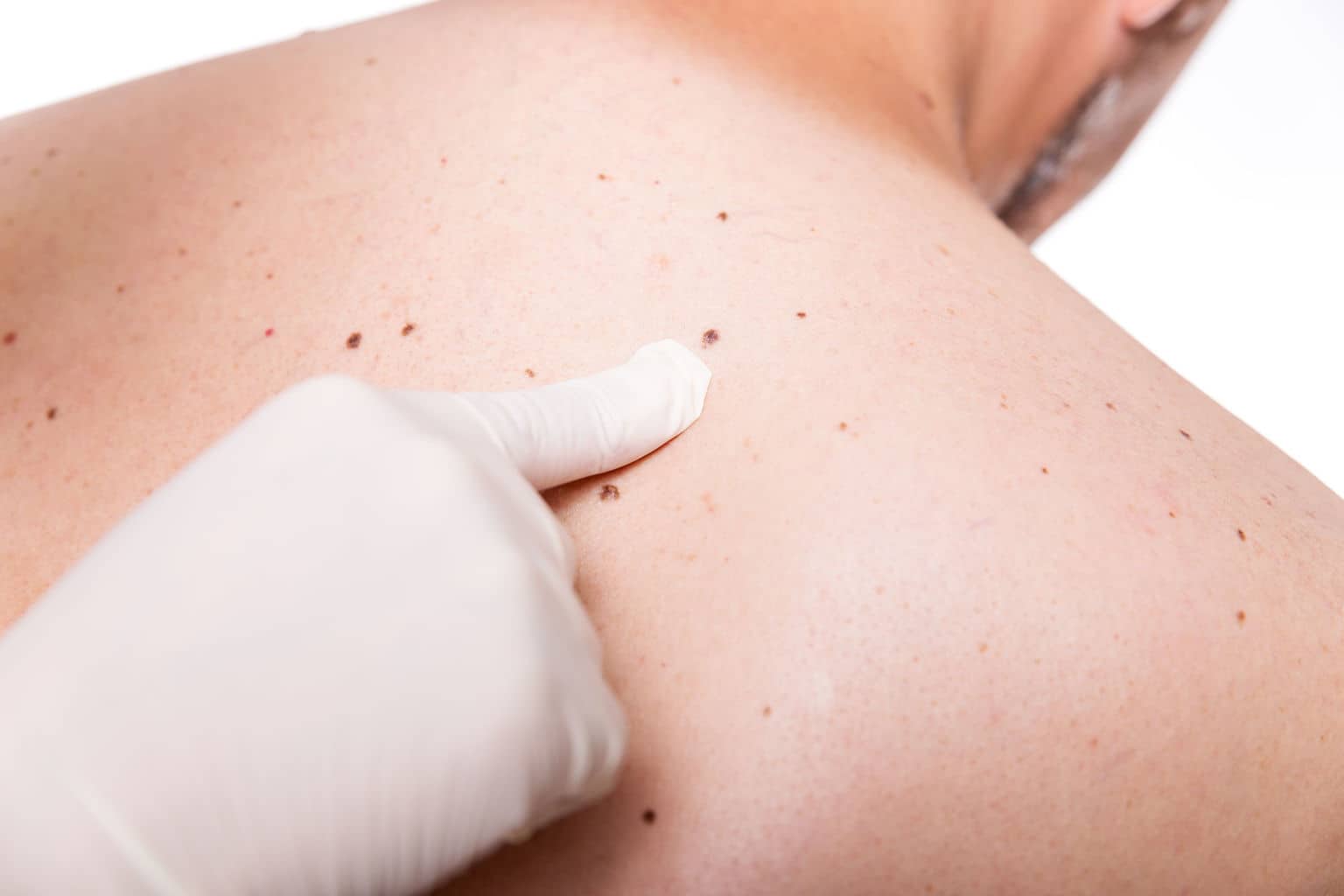
[cmamad id=”4836″ align=”center” tabid=”display-desktop” mobid=”display-desktop” stg=””]
If you have a mole and it changes, does that mean that you have a high chance of having skin cancer?
Moles, are they cancerous?
We live in the age of cancer worry.
There is so much cancer worry that every little mole has to be biopsied and sent off to the lab to make sure it’s not cancerous.
In medicine, a mole is called a nevus.
And more than one nevus is nevi.
Unusual or weird moles are called dysplastic nevi or atypical moles.
Now, if you’re doctor uses any of these anxiety-inducing terms, you know what they’re talking about.
And I’m going to bust wide open the myth that a mole that changes is often cancerous.
Skincancer.org says this is the way to spot moles that may be cancerous:

There are tons of pictures of these kinds of moles, so the above picture is just one of a multitude.
The classic advice when you find a so-called atypical mole to see your doctor.
Your doctor will look for these cancer signs in moles.
Then they will remove the mole and send it off to a lab somewhere.
The lab tech then peers through a microscope checking moles for cancer.
[cmamad id=”4837″ align=”center” tabid=”display-desktop” mobid=”display-desktop” stg=””]
More often than not, the mole isn’t cancerous.
Moles with cancer are just not as common as people think.
And the whole thing was an expensive, maybe even painful, waste of time.
I don’t mean to discourage you with that.
There are times that it turns out to have been cancer and you needed to know.
But I do mean to give you one other piece of information that your doctor probably does not know.

In this study, researchers monitored about 6,000 lesions or moles in about 300 patients over a period of several years.
They looked at these under a microscope which is the standard of care.
But look:
Photographic (dermoscopic) changes were noted in 1.6% of the lesions, which included only 1 melanoma (1.0%).
In other words, out of thousands of moles, only one could be identified as cancerous by peering at it under a microscope.
Of 6 melanomas biopsied during the follow-up period, only 1 was detected by dermoscopic photographic change at follow-up.
So the reality is that if you have a mole and they send it off to the lab, this is not going to help prevent cancer.
There’s really almost no sense in sending moles off to labs to be examined.
In fact, almost all skin cancer is going to come from moles that are never even detected or never seen.
This is also the reason why you may not want to go to the kind of doctor who says take off all your clothes.
You know, the sort of doctor who examines every inch of you.
These doctors are almost guaranteed to find something they think should be checked out.
And it’s almost guaranteed to turn out to be nothing.
So it’s really not worth it to go through that exam because you’re going to be creating a lot of problems for yourself.
You’re going to be creating a lot of cancer worry.
And 99.9% of these skin flaws are not going to be cancerous.
The few that are cancerous are unlikely to be seen or detected by looking at your skin.
As the study notes:
The sensitivity of dermoscopic monitoring is limited by melanomas that may arise in normal skin or in clinically benign nevi that were not initially photographed.
So virtually all cancer is going to originate from areas that are not visible or easily seen on the skin.
Now take this quick side trip with me for a second.
All bears are animals, but not all animals are bears.
I know, that doesn’t seem relevant at all, but it’s a great metaphor for this situation.
It’s the same with moles.
Many cancerous growths on the skin, melanomas, originate from moles.
But very few of the moles you find turn out to be cancerous.
It’s the ones we cannot see that can be trouble.

Dysplastic nevi occur nearly four times more frequently among patients with a prior diagnosis of superficial spreading melanoma relative to nodular melanoma.
This is just one of a number of studies showing that melanomas often originate from suspicious looking moles.
But the key is that as we have seen above, it’s often the moles that you don’t even see or detect.
Now, this is not a reason to avoid going to a dermatologist routinely, but it’s enough for me not to go.
I don’t bother with going to the dermatologist.
I’m also looking at very natural ways of getting rid of moles.
The chances of a mole turning into cancer are extremely low.
And even if it does, these types of cancers very easily reversible in almost all cases.
Very few cases of skin cancer are malignant melanoma — that’s the really harmful or fatal kind.

In this study, only 1.5% of suspected cancers were actually malignant melanoma.
This study covered several decades, and the same issues are present today.
There is just too much cancer worry.
I hope this has given you some perspective.
I’ll try to have some natural ways of getting rid of moles in an upcoming newsletter.

http://www.skincancer.org/skin-cancer-information/atypical-moles
Digital Dermoscopic Monitoring of Atypical Nevi in Patients at Risk for Melanoma
http://onlinelibrary.wiley.com/doi/10.1111/j.1524-4725.2007.33254.x/full
Dysplastic nevi in relation to superficial spreading melanoma.
http://cebp.aacrjournals.org/content/2/2/99.short
Accuracy in the Clinical Diagnosis of Malignant Melanoma
http://jamanetwork.com/journals/jamadermatology/article-abstract/551839

Leave a Reply